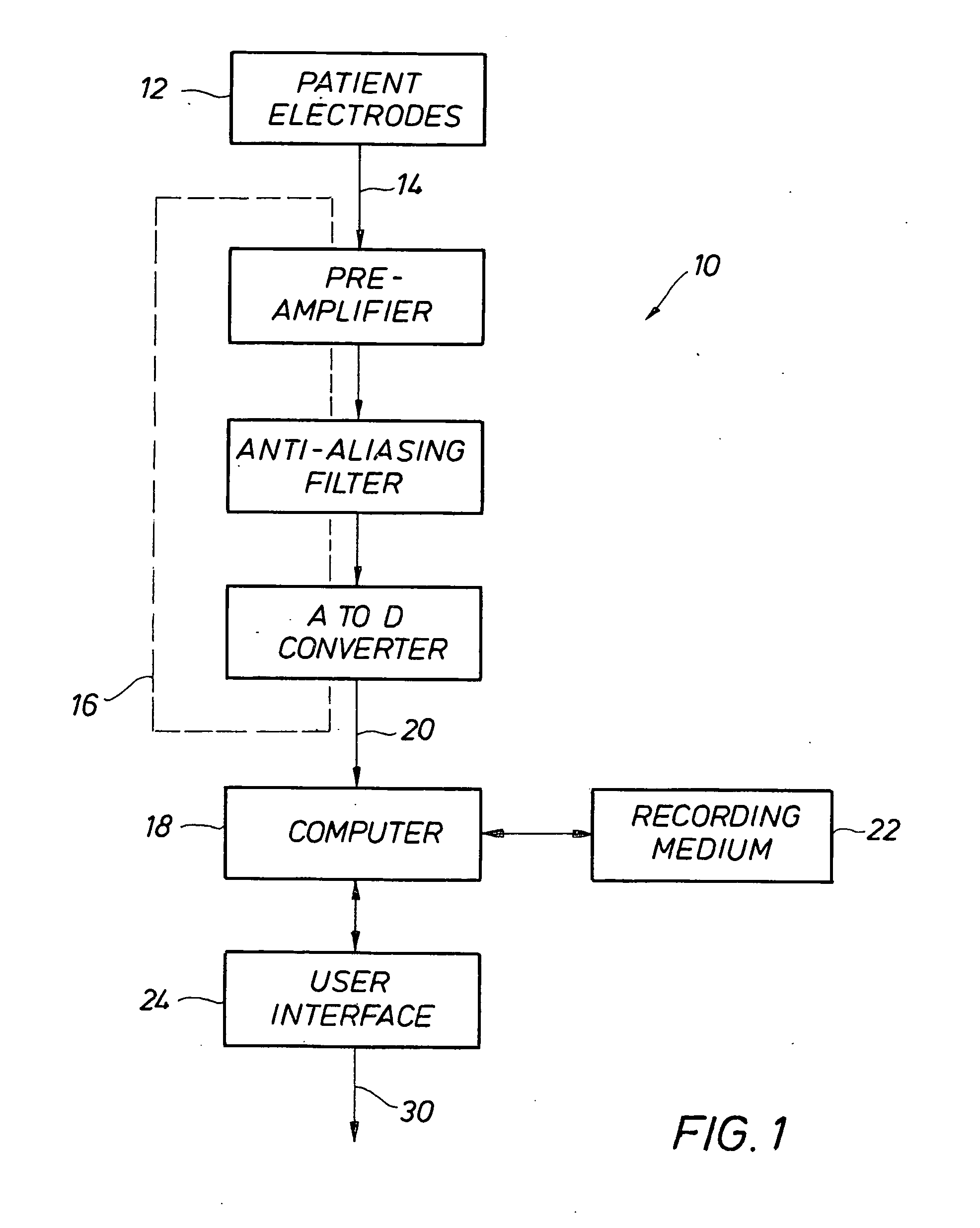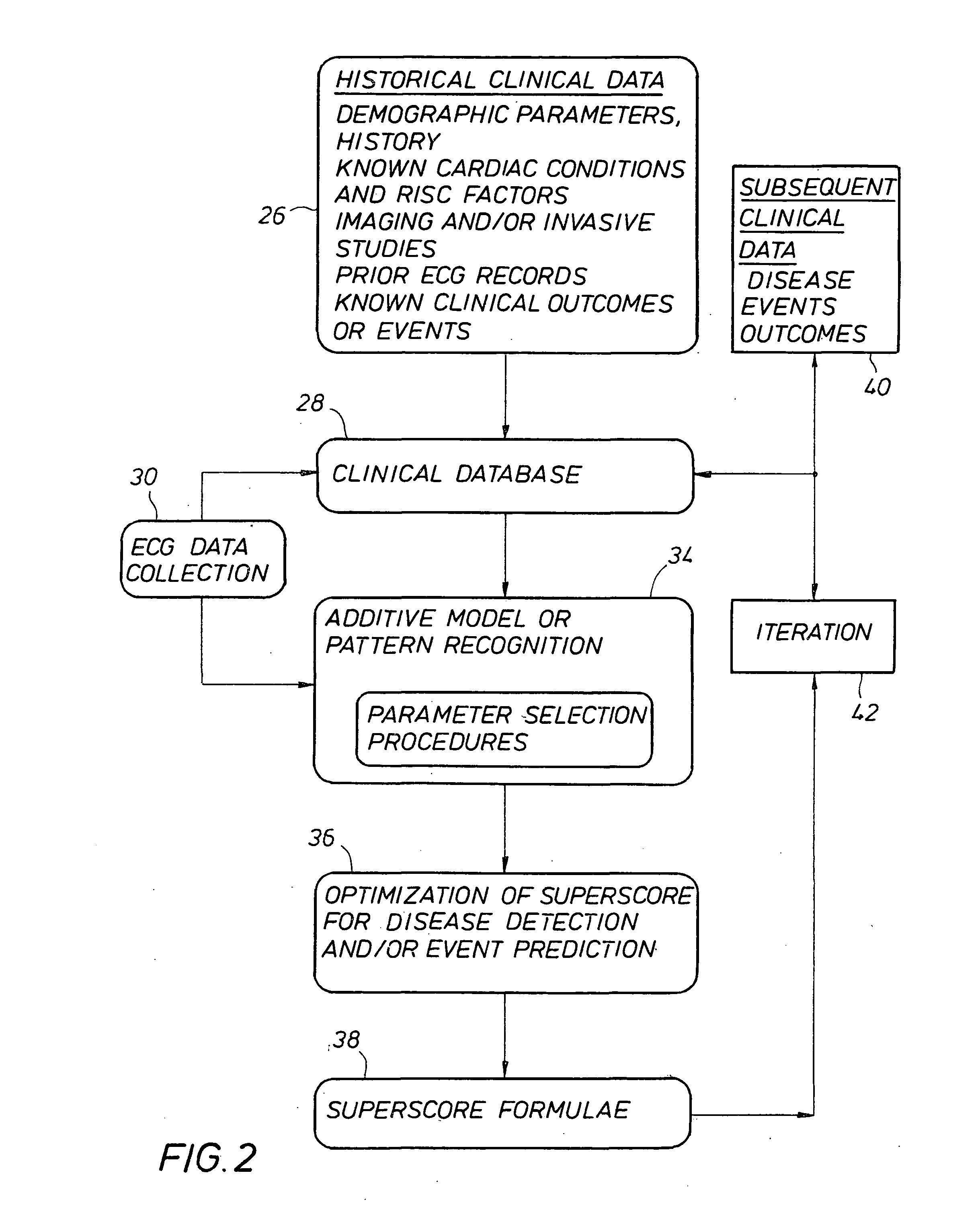Diagnostic and predictive system and methodology using multiple parameter electrocardiography superscores
a multi-parameter electrocardiography and diagnostic system technology, applied in the field of electrocardiography, can solve the problems of insufficient accuracy, time-consuming and laborious ecg, and insensitive ecg of conventional exercise stress, and achieve the effect of better identifying the risk of specific types of cardiac events and detecting and screening
- Summary
- Abstract
- Description
- Claims
- Application Information
AI Technical Summary
Benefits of technology
Problems solved by technology
Method used
Image
Examples
Embodiment Construction
[0030]FIG. 1 shows a simplified, functional, block diagram of a multichannel electrocardiographic monitoring and data storage system, 10 adapted to carry out the present invention. The invention monitors the cardiac function of a patient with a plurality of patient electrodes 12. The electrodes 12, when attached to an appropriate lead wire cable 14, provide measurements of cardiac electrical function at or between various contact points on the skin of a patient in the conventional manner. For example, in the conventional 12-lead configuration, ten electrodes placed upon the skin of the patient in the conventional configuration provide eight channels of incoming analog data.
[0031]A console 16 conditions and digitizes the incoming analog data from the cable 14 and provides the digitized signal to a computer 18 by way of a communications channel 20, which may preferably be a conventional cable, a network connection, or a wireless communication channel by radio frequency wave. In a pref...
PUM
 Login to View More
Login to View More Abstract
Description
Claims
Application Information
 Login to View More
Login to View More - R&D
- Intellectual Property
- Life Sciences
- Materials
- Tech Scout
- Unparalleled Data Quality
- Higher Quality Content
- 60% Fewer Hallucinations
Browse by: Latest US Patents, China's latest patents, Technical Efficacy Thesaurus, Application Domain, Technology Topic, Popular Technical Reports.
© 2025 PatSnap. All rights reserved.Legal|Privacy policy|Modern Slavery Act Transparency Statement|Sitemap|About US| Contact US: help@patsnap.com



